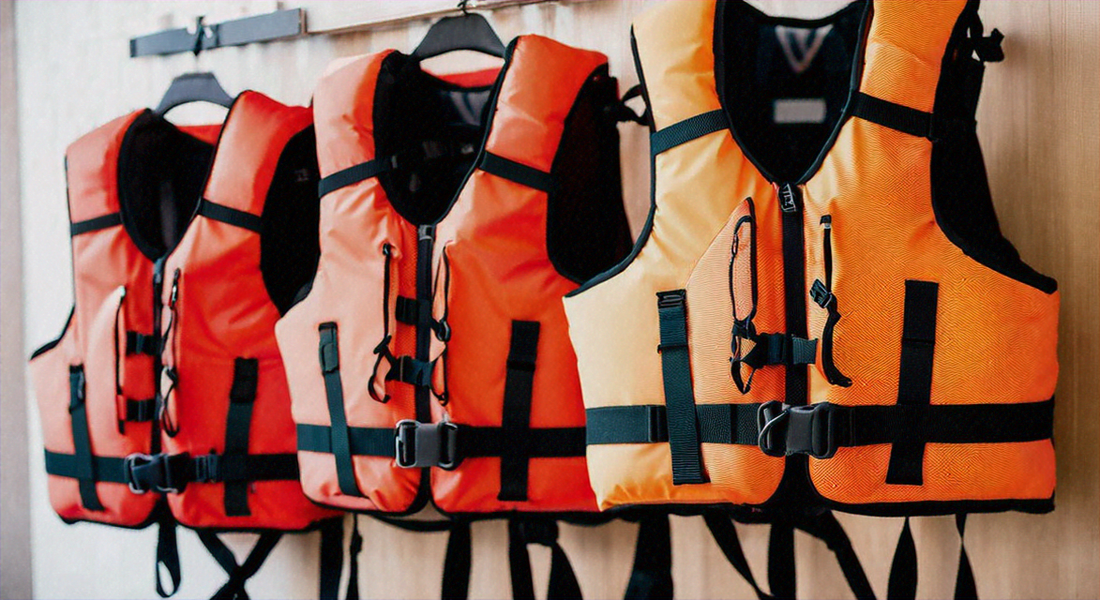Do I Need to Wear a Life Jacket When Kayaking?
The open water beckons with its allure. The gentle rocking of a kayak, the rhythmic dip of the paddle, and the serenity of nature all combine to create a truly enchanting experience. But amidst the tranquility, it's crucial to remember that kayaking, like any water activity, comes with inherent risks. The question of whether or not to wear a life jacket is a common one, and the answer is simple, yet paramount: **always wear a life jacket when kayaking.**
This isn't just a suggestion; it's a crucial element of water safety, a safety net that could save your life in a moment's notice. Many people believe, "I'm a strong swimmer, I'll be fine." But even the most skilled swimmers can find themselves in situations where a life jacket makes all the difference. Unexpected currents, sudden weather changes, and unforeseen obstacles can turn a peaceful paddle into a dangerous situation.
Why Wearing a Life Jacket Is Essential for Kayakers
The importance of life jackets in kayaking cannot be overstated. They provide crucial buoyancy, helping you stay afloat in the event of a capsize or fall into the water. Here's a deeper dive into why wearing a life jacket is non-negotiable:
- Unexpected Falls: Even seasoned kayakers can capsize or fall overboard due to sudden gusts of wind, rogue waves, unexpected underwater obstacles, or even a simple misstep. A life jacket keeps you afloat, preventing you from drowning, and gives you precious time to regain your balance, find your kayak, or reach a safe shore.
- Hypothermia: Water temperatures, especially in lakes and rivers, can be surprisingly cold, even on a warm summer day. Prolonged exposure to cold water can quickly lead to hypothermia, causing confusion, muscle weakness, and even loss of consciousness. A life jacket helps you stay afloat, conserve energy, and reduce the risk of hypothermia, increasing your chances of survival.
- Fatigue: Paddling for extended periods can be physically tiring, especially against currents or winds. Fatigue can lead to impaired judgment and reduced strength, making it easier to lose your balance and fall into the water. A life jacket provides a vital safety cushion, ensuring you stay afloat even if you become fatigued.
- Unforeseen Events: Accidents can happen on the water, whether it's a sudden storm, a collision with another boat, or a medical emergency. A life jacket is your primary line of defense, providing vital buoyancy and increasing your chances of survival.
In essence, wearing a life jacket is not a matter of being cautious; it's a matter of being responsible and prioritizing your safety. It's the single most effective way to reduce the risk of drowning and ensure you enjoy your kayaking adventures safely.
Choosing the Right Life Jacket for Your Needs
The world of life jackets is vast, with a multitude of options available. Choosing the right one is crucial for your comfort and safety. Here's a breakdown of some top options for both adults and kids, designed specifically for kayaking:
Life Jackets for Adult Kayakers
-
Air Span Breeze Kayak Life Jacket - Onyx - This jacket is engineered for ultimate comfort and breathability, making it perfect for longer kayaking trips. The Air Span technology creates an air gap between your back and the foam, keeping you cool and comfortable, even on hot days. It also features multiple adjustment points for a secure fit and reflective material for increased visibility, ensuring you can be seen easily in low-light conditions.

-
Mustang MIT 100 Inflatable PFD - Admiral Grey - Automatic/Manual - For kayakers who prioritize comfort and mobility, this lightweight and flexible inflatable PFD is an excellent choice. The automatic/manual inflation system provides peace of mind, ensuring you can inflate the PFD quickly in an emergency. The 1-fold design makes it easy to pack and store, taking up minimal space in your kayak.

-
Mustang Women’s Moxie Foam Kayak Life Vest - Specifically designed for women, this vest offers a high-back design that clears most kayak seatbacks for maximum comfort. It also includes an Adjust-a-Bust system for supportive comfort and breathable mesh panels to keep you cool, ensuring you stay comfortable even during longer paddling sessions.

-
Onyx MoveVent Dynamic Kayak and Paddle Sports Vest - This vest is designed to provide excellent mobility for recreational paddle sports, including kayaking. The MoveVent series features innovative vented channels that help keep you cool, even when paddling for long periods. The mesh ventilation is featured in the front and back of the MoveVent series jackets to allow for maximum airflow, keeping you comfortable on hot days.

Life Jackets for Kids
Ensuring the safety of children on the water is of paramount importance. Choosing a properly fitting and comfortable life jacket for kids is crucial for their safety and enjoyment of kayaking.
-
Childs Rapid-Dry Kayak Life Jacket - Full Throttle - This vest is designed for comfort and safety for kids. It features wide armholes for unfettered movement, vibrant colors for enhanced visibility, and a secure fit with a front zipper and adjustable waist and leg straps. The Rapid-Dry technology helps keep the vest dry, even after a splash, ensuring kids stay comfortable and safe.

Important Considerations When Choosing a Life Jacket
With so many options, it's easy to get overwhelmed when choosing a life jacket. Here's a comprehensive guide to help you make the right decision for your kayaking adventures:
- Fit: The life jacket should fit snugly but comfortably, allowing for a full range of motion. It shouldn't ride up or slide around when you move. Try it on with the kayak seat to ensure it fits properly. A properly fitting life jacket will provide the best support and buoyancy.
- Type: Kayak-specific life jackets are generally Type III PFDs, which offer a good balance of comfort and safety. They provide excellent buoyancy and allow for good mobility, ensuring you can paddle effectively while staying safe.
- Features: Look for features that enhance safety and comfort, such as:
- Reflective material: This is essential for visibility, especially in low-light conditions or during early morning or evening paddles. Reflective material helps other boaters see you more easily, increasing your safety.
- Whistle: A whistle is a crucial safety device, allowing you to signal for help if you need it. Keep the whistle easily accessible.
- Pockets: Pockets allow you to carry essential gear, such as a phone, snacks, sunscreen, or a waterproof map, within easy reach. Choose pockets that are secure and drain well to prevent water from getting inside.
- Adjustable straps: This ensures you can get a perfect fit, ensuring the life jacket stays in place, even during active paddling.
- US Coast Guard Approved: Ensure your life jacket meets US Coast Guard standards for safety and buoyancy. Look for the USCG approval label. This label signifies that the life jacket has been tested and meets the required safety standards.
Wearing a Life Jacket: Best Practices
Once you've chosen the perfect life jacket, it's essential to wear it correctly and consistently. Here are some key practices for wearing your life jacket safely:
- Always wear it: Even if you think you'll be paddling in calm waters or you're a strong swimmer, wear your life jacket at all times. The unexpected can happen, and it's better to be safe than sorry.
- Fasten all straps: Make sure all straps are securely fastened and adjusted for a snug fit. You should be able to move freely, but the life jacket should not be loose or sliding around. A secure fit ensures the life jacket will stay in place even during a capsize.
- Check for damage: Inspect your life jacket regularly for any tears, rips, or damage. Even small tears can compromise its safety. Before each use, check your life jacket carefully to ensure it's in good condition.
- Proper Maintenance: Follow the manufacturer's instructions for cleaning and storing your life jacket. This will help ensure it stays in good condition and continues to provide adequate buoyancy. Proper maintenance will extend the life of your life jacket and keep it functioning properly.
Beyond the Life Jacket: Essential Safety Practices for Kayaking
While a life jacket is the most crucial safety element, it's not the only one. Here are some additional safety practices to keep in mind when kayaking:
- File a Float Plan: Tell someone where you're going, what route you plan to take, and when you expect to return. This way, if something happens, someone knows to look for you.
- Check the Weather: Always check the weather forecast before heading out. Sudden storms can develop quickly and create dangerous conditions. Avoid paddling during storms or when strong winds are expected.
- Know Your Limits: Don't attempt to paddle beyond your skill level or in conditions that are too challenging. Paddle in calm waters and gradually progress to more challenging conditions as your skills develop.
- Paddle with a Partner: If possible, paddle with a friend or group. This provides extra safety, as someone else can call for help if needed.
- Carry a Safety Kit: Pack a safety kit with essential items like a first-aid kit, a waterproof flashlight, a whistle, a signaling mirror, a spare paddle, and a waterproof bag for your phone and other important items.
- Be Aware of Your Surroundings: Pay attention to your surroundings and be aware of potential hazards like rocks, logs, and currents. Avoid paddling near areas with heavy boat traffic or industrial activity.
Conclusion
Kayaking is an exhilarating and rewarding activity, but it's important to approach it with safety as a top priority. Wearing a life jacket is not a matter of choice, it's a matter of responsibility. By choosing the right life jacket for your needs and wearing it correctly, along with practicing safe kayaking habits, you can enjoy the thrills and beauty of kayaking with confidence and peace of mind. Remember, a little extra caution goes a long way when it comes to water safety. So, always wear your life jacket, stay informed, and have a safe and memorable kayaking experience!

